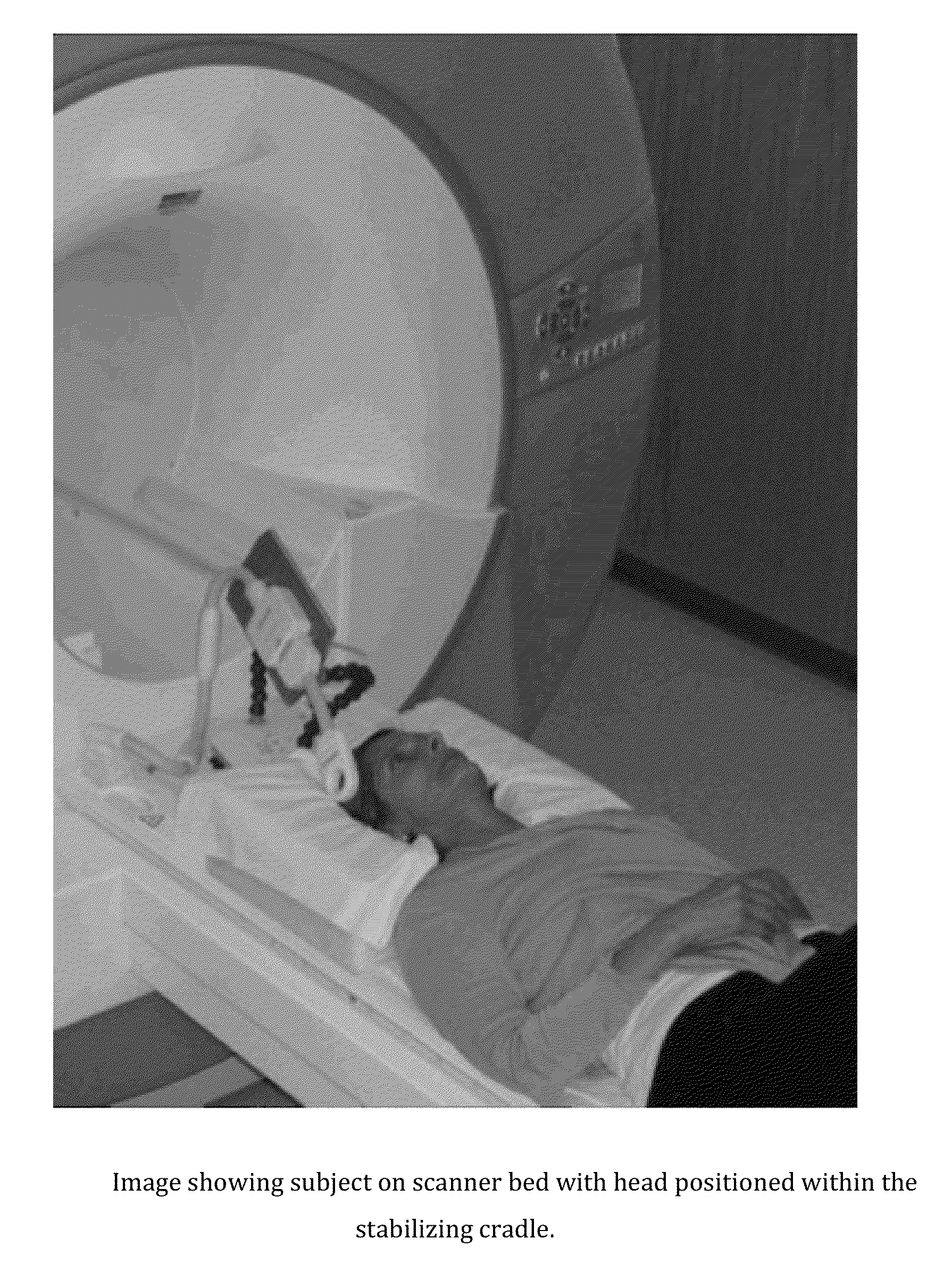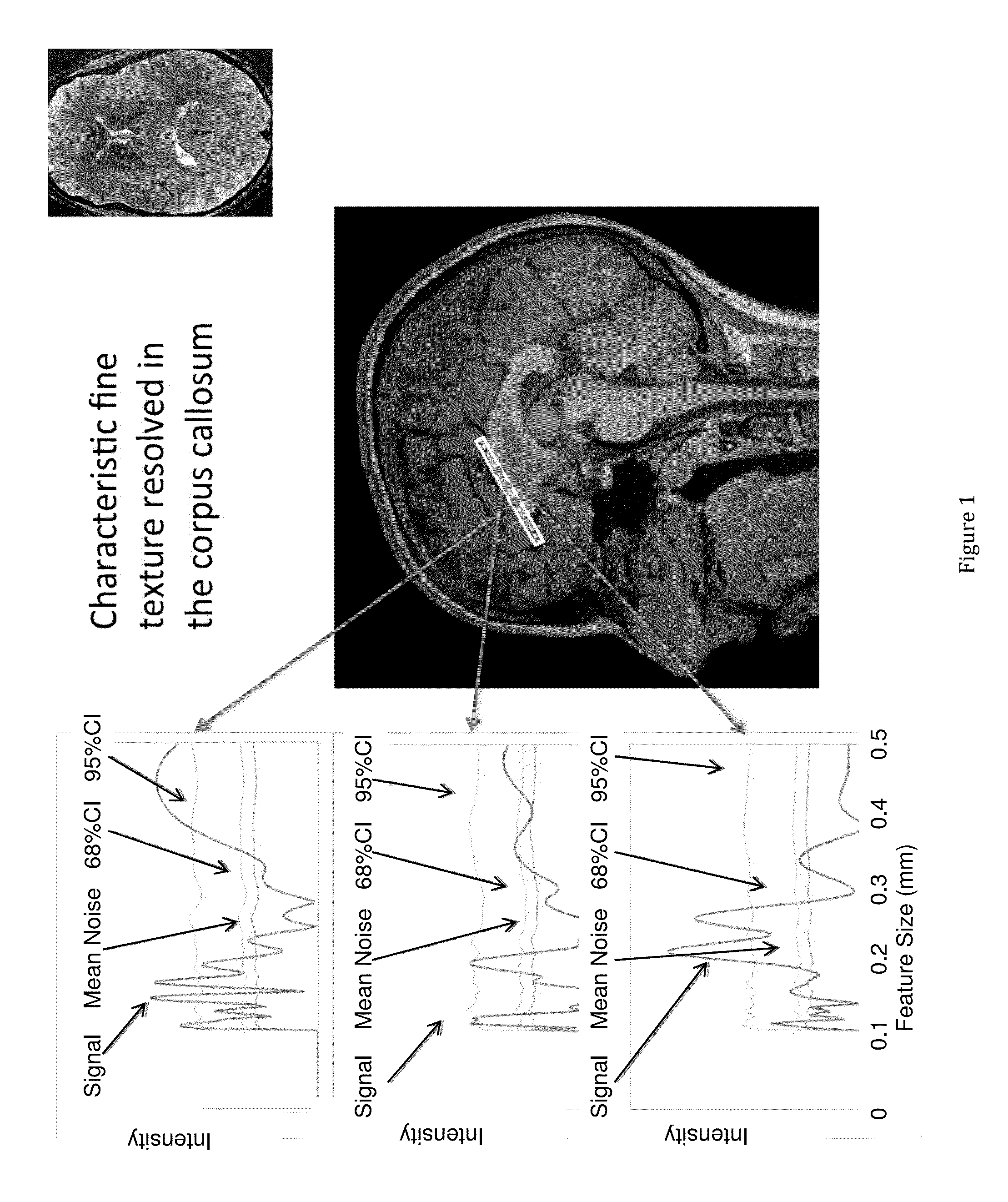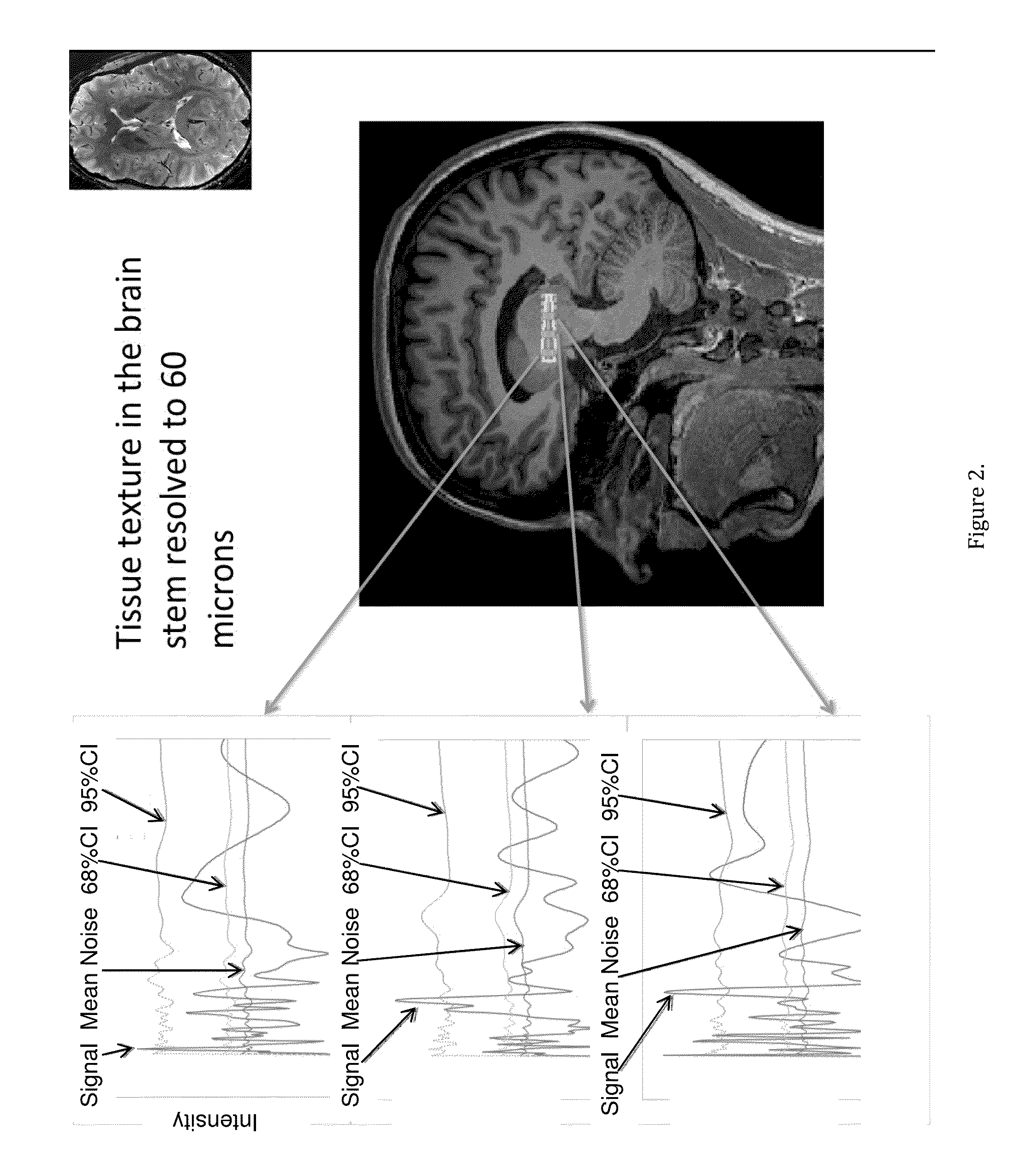Magnetic Resonance Based Method for Assessing Alzheimer's Disease and Related Pathologies
a magnetic resonance and pathology technology, applied in the direction of nmr measurement, instruments, applications, etc., can solve the problems of no cure, no definitive diagnostic currently available for longitudinal use, and neither of these modalities currently has the ability to see changes
- Summary
- Abstract
- Description
- Claims
- Application Information
AI Technical Summary
Benefits of technology
Problems solved by technology
Method used
Image
Examples
Embodiment Construction
[0046]The current invention consists of adaptations / refinements to U.S. Pat. No. 7,932,720, to facilitate application of this prior art to brain pathology, specifically to the etiology attendant with onset and development of AD and other associated dementias, though the refinements also can be applied to probing regions of the brain to measure many other pathology and trauma-induced tissue effects.
[0047]FIGS. 1 and 2 show the magnetic resonance fine texture measurement technique applied to brain. Structural wavelength spectra are generated from the indicated regions of interest along an axis of the selectively excited inner volume.
[0048]In order to define terminology for what follows, and with reference to the prior art magnetic resonance fine texture measurement technique, an internal volume in the anatomy of interest is excited by proper sequencing of magnetic field gradients and RF (Radio Frequency) pulses. Acquisition of the finely sampled 1D data is enabled by application of a ...
PUM
 Login to View More
Login to View More Abstract
Description
Claims
Application Information
 Login to View More
Login to View More - R&D
- Intellectual Property
- Life Sciences
- Materials
- Tech Scout
- Unparalleled Data Quality
- Higher Quality Content
- 60% Fewer Hallucinations
Browse by: Latest US Patents, China's latest patents, Technical Efficacy Thesaurus, Application Domain, Technology Topic, Popular Technical Reports.
© 2025 PatSnap. All rights reserved.Legal|Privacy policy|Modern Slavery Act Transparency Statement|Sitemap|About US| Contact US: help@patsnap.com



